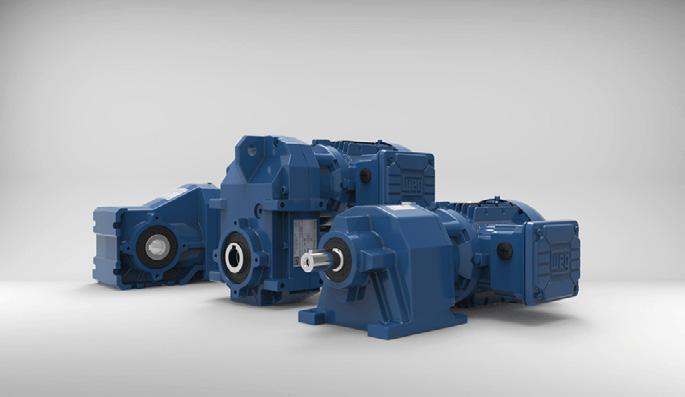
2 minute read
Gearbox considerations for hazardous environments
Marek Lukaszczyk, Marketing Manager for Europe and the Middle East at geared motor manufacturer WEG, explains the requirements of ATEX-certified geared motors.
Plans to replace the ATEX regulations for the use of equipment in explosive atmospheres with new UKCA (UKEX) standards have been paused. Instead, ATEX Type Certificates will remain critical for the use of equipment in hazardous environments – like in mining, quarrying and oil and gas – until the end of 2024.
If you plan to use a geared motor in an environment that includes any explosive atmospheres caused by flammable gases, mists, vapours or combustible dust, adhering to the relevant ATEX Directives is vital. Notably, Directive 99/92/EC, sometimes referred to as ATEX 137 or the ATEX Workplace Directive, focuses on protecting workers. In addition, Directive 94/9/EC, also known as the ATEX Equipment Directive, ensures the safety of equipment used in explosive atmospheres.
Plant operators working in hazardous atmospheres must comply with these directives at all times – not only when operating on site, but also when selecting machinery, parts and components, such as gearboxes and motors. This first involves understanding the environment and the specific types of hazards it presents.
How The Environment Impacts Motor Choice
Hazardous atmospheres in plant environments are categorised as zones by the ATEX regulations – and these zones are numbered one, two, 21 and 22. ATEX zone one is characterised by high-risk gas and vapour, and zone two by medium-risk gas and vapour. Zone 21 is characterised by high-risk power and dust, and Zone 22 by the same elements as medium-risk.
These zones distinguish between places with a high chance of an explosive atmosphere developing and those where an explosive atmosphere may only occur occasionally or in abnormal circumstances. This classification affects not only the health and safety guidance for workers in these areas, but also the equipment that can be used and how it should be mounted and installed.
Another ATEX regulation is Directive 2014/34/EU, with which equipment for operation in hazardous areas must comply. Plant managers can specify compliant equipment, certified by the manufacturer. Geared motors must comply with the ATEX Category 2G standard for zone one, ATEX Category 3G for zone two, ATEX Category 2D for zone 21 and ATEX Category 3D for zone 22. For example, the WEG WG20 range of geared motors is designed specifically for explosion-protected areas and carries an ATEX certification.
There are also installation differences for the different zones. Geared motors in zones two and 22 can be mounted directly, whereas an adaptor is required for zones one and 21. Mounting geared motors can reap technical benefits and is also a straightforward process. Market standards have dictated certain fitting dimensions for geared motors, so selecting a geared motor that is fully compatible with these standards is advantageous.
For WEG, designing motors to the
ATEX standard ensures plant managers do not have to modify their systems to meet the regulations. It also allows machine manufacturers to retrofit WEG’s motors to their existing equipment without major modifications.
Should a motor flange adapter be required, which is responsible for converting the transfer of motion from a motor or engine to another device machine, then manufacturers can use the adaptor to combine the gearbox with other equipment. For instance, the entire range of WG20 gear units can be combined with explosion-proof WEG IEC energy-efficient motors for applications in hazardous zones one and 21.
Overlooking these requirements can have dire consequences for machine manufacturers serving the oil and gas, quarrying and mining industries. Not only does adhering to ATEX regulations protect the manufacturer from non-compliance, but incorrect equipment used in these sectors can be incredibly dangerous –hence the stringent regulations associated with the markets. TIMES-CIRCLE










